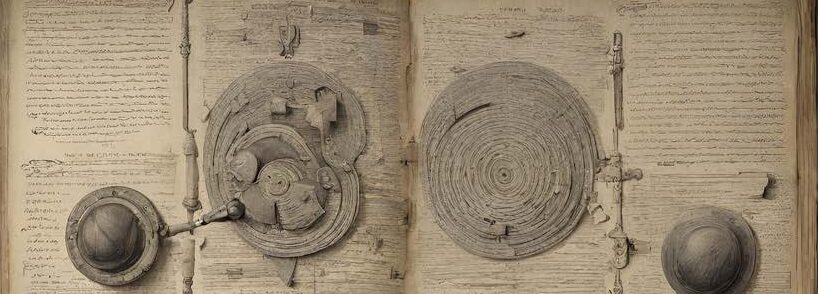
The way we interact with literature has changed drastically since the development of the Reader Pen. In 1998, C-Pen patented the idea of a small sensor that could scan images and fit into a pen, which led to a major shift in accessibility tools. It uses optical character recognition (OCR) that is capable of recognising 100+ languages to generate audible speech from the texts that it transcribes. These features coupled with the ability to save and transfer transcribed text to computers in newer models , has transformed the reading experience for individuals, especially those with visual disabilities. These advancements extend the benefits to individuals with dyslexia and other disabilities, contributing to a more inclusive society where literature is accessible to all. The Reader Pen serves not only as a reading tool but also as a powerful accessibility aid, symbolizing progress in making literature a shared experience for everyone.
History, Developments and its Functions
In 1998 the Reader’s Pen was founded in Lund, Sweden. It was developed by the brand C-Pen, which patented the idea of a small sensor that could scan images and fit into a pen. Today, Reader Pens have evolved into versatile scanning pens that carry out various tasks and do not require Wi-Fi connection to work. It is able to read English, Spanish, French, and many other languages with a human-like voice, helping those suffering from reading disabilities like dyslexia. It is useful when traveling as it can instantly translate foreign text, allowing travelers to communicate better with locals. Users can select and transfer information to a computer. There is also a digital dictionary integrated into the pen that can define words, which is possible by gliding the pen’s tip over a text. It displays the definition, but it also reads the text aloud.

Personal Commentry
The functions of the Reader Pen have impacted my reading practices, both through my experiences and through a close friend who has dyslexia. This device evolved from a personal aid to a resource that has transformed how we engage with literature. During my time at school, a close friend faced moderate dyslexia, which meant he would either write words backward or he would have the correct letters, but the order of the words were completely mixed up. His speech would be fine, but his writing would be chaotic. In grade five, he introduced me to the reader pen. My friend would bring it to school daily, relying on it to navigate our textbooks and written assignments. It initially started as my friend’s support device as time passed, it started to gain recognition from teachers who realized the benefits of the device as it could assist everyone with reading, pronunciation, and better understanding of the literature they came across. The digital dictionary allows users to engage better with the literature as the pen ensures that the correct words and pronunciations are used. As it has the ability to scan and transfer text directly onto computers helping ease the process of researching and referencing. These features enhanced my research experiences, making it easier to integrate source material into my reading materials more efficiently.
Conclusion
The Reader Pen helped me read books above my age level. It gave me initiative; instead of waiting for someone more experienced than me, I would use the reader pen to help pronounce difficult words. I found out that the device could read other languages, which led me to begin using it on classical Arabic literature, which allowed me to improve my reading as complex texts became straightforward to understand, thus making me engage more. From then on, I perceived reading in a new light as my enthusiasm for reading had been ignited.
In a time where technology is continuously changing , the reader pen is a symbol of both innovation and initiative . 1998 was the year that the way we interacted with literature started to change as we were introduced to this versatile tool. It has allowed for me , my friend and people around the world to understand literature better. Thus making literature more accessible and enjoyable for everyone.
References
About C-Pen – Learn the history of the original pen scanner. (2022, February 8). C-Pen. https://cpen.com/about-us/
C-PEN (Virrata AB). (2017, October 3). C-Pen ReaderPen Exam Lock (ENG). Www.youtube.com. https://www.youtube.com/watch?v=UACTzm4wLFs&ab_channel=C-PEN%28VirrataAB%29
C-Pen scanner pen software. Download the correct option for your product. (n.d.). C-Pen. Retrieved November 18, 2023, from https://cpen.com/software/#:~:text=C%2DPen%20Core&text=It%20includes%20drivers
Manage Challenges of Dyslexia with Assistive Technology. (2021). C-Pen. https://cpen.com/insights/manage-challenges-of-dyslexia-with-assistive-technology/
New service: Reader Pens. (2021, December 20). Dlr LIBRARIES. https://libraries.dlrcoco.ie/events-and-news/library-news/new-service-reader-pens
ReaderPen (Like New). (n.d.). Www.scanningpens.com. https://www.scanningpens.com/Reading-Aids-Products-SPUS/reader_2.html
Scanner Pen. (n.d.). Math et Mots Monde. Retrieved November 5, 2023, from https://www.mathetmots.com/ca-en/c-pen
Scanning Pens. (2016, October 21). ReaderPen: Overview. Www.youtube.com. https://www.youtube.com/watch?v=DbU29Z_hhf0&t=75s&ab_channel=ScanningPens
